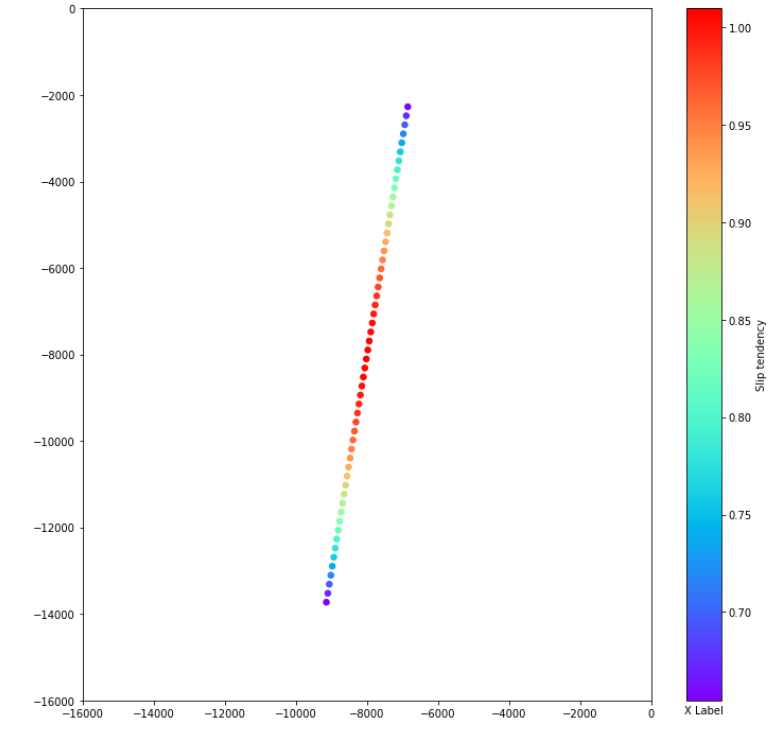Effects of thermally dependent rock parameters on fracture reactivation, 2019
Marius Meier
Main content
Advisors: Michele Starnoni, Inga Berre
Short description of the project:
The slip tendency is an important tool to measure fracture reactivation in thecontext of subsurface engineering applications. In this thesis, the effects of thermally-dependent rock parameters such as Young’s modulus on the slip tendency are exam-ined by running several two-dimensional simulations in a porous media with a single fracture. The numerical solver used is the MPSA method which is a modified finite volume method used for elasticity problems. First, simulations are done with two different sets of boundary conditions to see which combination of boundary conditions and fracture orientation produces the highest slip tendencies. After the best combi-nation is found, the simulations are done again with varying temperature to see the effect temperature has on the slip tendency. A third series of simulations follow with a temperature gradient acting on the domain which is dependent on the depth of the domain. All the simulation results represented here clearly indicate that temperature variations, varying orientation of the fracture and varying Young’s modulus on the surrounding matrix as a function of the temperature have significant impact on the slip tendency.
Link to the thesis at Bora-UiB: https://bora.uib.no/bora-xmlui/handle/1956/20639?locale-attribute=en
